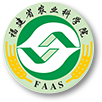Abstract:
This study attempted to apply lignocellulose to adsorb polyphenols from the extract of fresh tea leaves followed by water-elution to obtain purified and concentrated tea polyphenols. Static and dynamic adsorption using acid-and-alkali pretreated sawdust of poplar, cedarwood, and pine, Tie-guanyin oolong tea stalks, macro-porous resin, and granular activated carbon were conducted. The results indicated that cedarwood sawdust was the preferred raw material for the process. At the tea extract feeding speed of 3 mL·min
-1, the equilibrium adsorption of catechins was found to be 107.93 mg·g
-1. Subsequently, washing with purified water on the adsorbent at ambient temperature and a flow rate of 2 mL·min
-1 achieved a catechins desorption rate of 26.21%.




 下载:
下载: